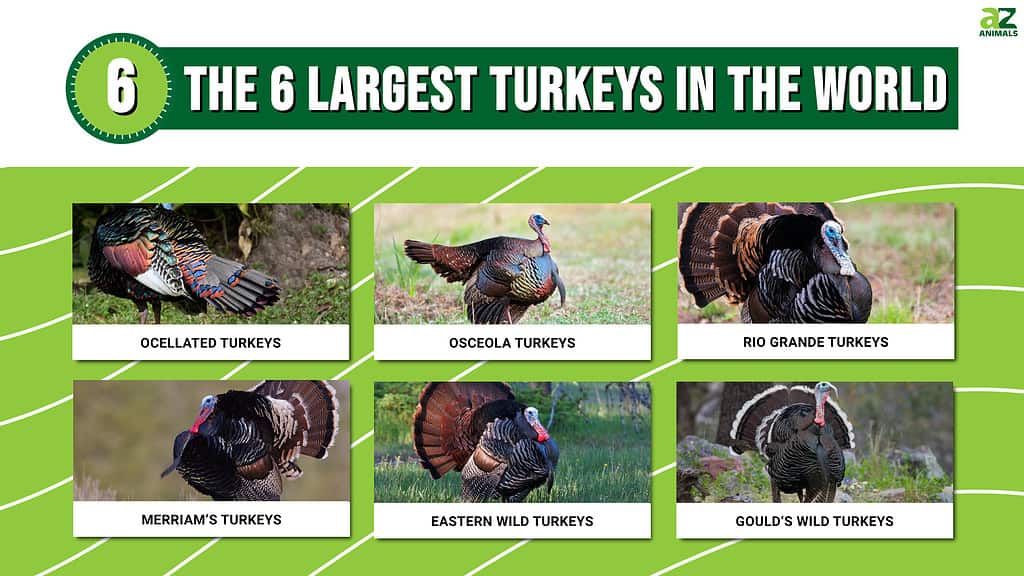
If you are planning a Thanksgiving dinner for eight adults and seven kids (and you are looking forward to leftover turkey sandwiches), you would need a 20-lb turkey (according to the Butterball calculator), which is the average weight of a domestic turkey. Domestic and wild turkeys are the same species (North American turkey or Meleagrididae), but domestic turkeys grow larger than wild turkeys. Wild turkeys range in size from 11-23 lbs (males) whereas domestic turkeys average 30-40 lbs with some getting much larger. The other turkey species, the ocellated turkey (Phasianidae), is much smaller. It averages 11 lbs (males) and lives in Mexico, northern Belize, and Guatemala. But the North American turkeys are by far more populous and the most common turkey.
There are 5 subspecies of North American turkeys. The Gould’s wild turkey is the largest, and the Eastern is the most populous. The Eastern and Merriam’s turkeys are the next largest, followed by the Osceola and Rio Grande. Turkey subspecies are determined by the location of the turkeys and distinguishing differences in their feather coloration (especially the tips), feather design, wattle color, and overall size. We will look at how these turkeys compare in size and discover more fun facts about the largest turkeys in the world!
Ocellated turkeys
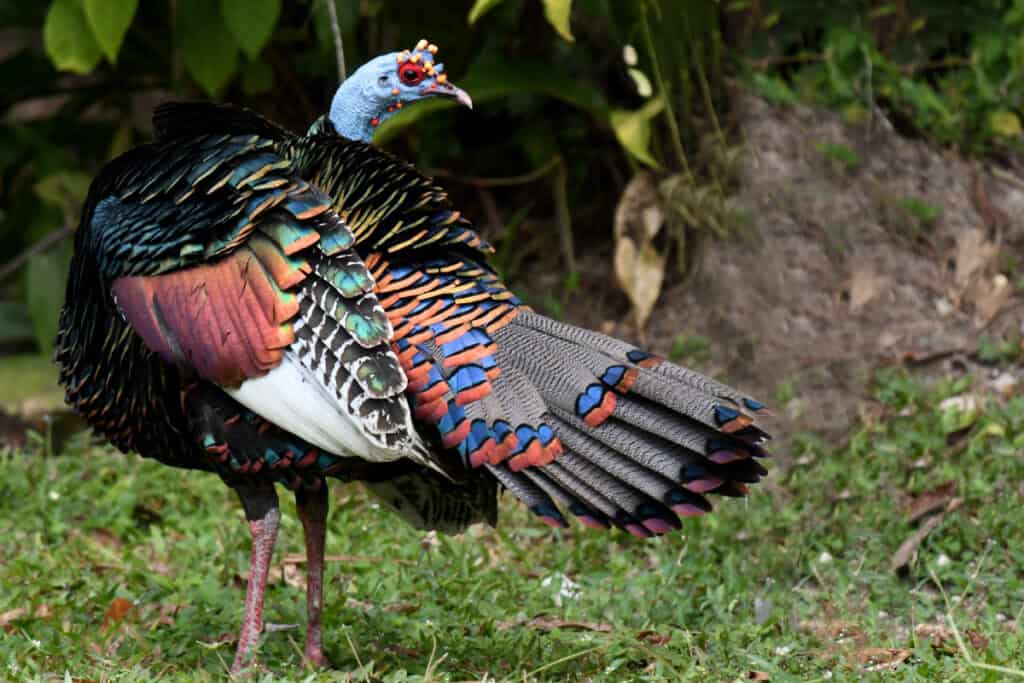
Ocellated turkeys look peacock-like with their iridescent feathers that have eye-shaped circles at the tips.
©Lev Frid/Shutterstock.com
Ocellated turkeys weigh about 11 lbs (males) with the females being smaller, averaging 6 lbs. These turkeys look peacock-like with their iridescent feathers that have eye-shaped circles at the tips. They have a similar coloration with blue-green feathers and a blue head. The male and female ocellated turkeys look very similar in coloration so this is not a good way to tell them apart. They are distinguished by size. Males are significantly larger than females. A close-up of their face shows a red circle around their eyes and a series of orange wart-like growths on their necks. Males have these growths on their crowns as well. This unique-looking species lives in Mexico, Belize, and parts of Guatemala. Conservationists are keeping an eye on this species, which is considered “Near Threatened” by the ICUN.
Osceola (Florida) turkeys
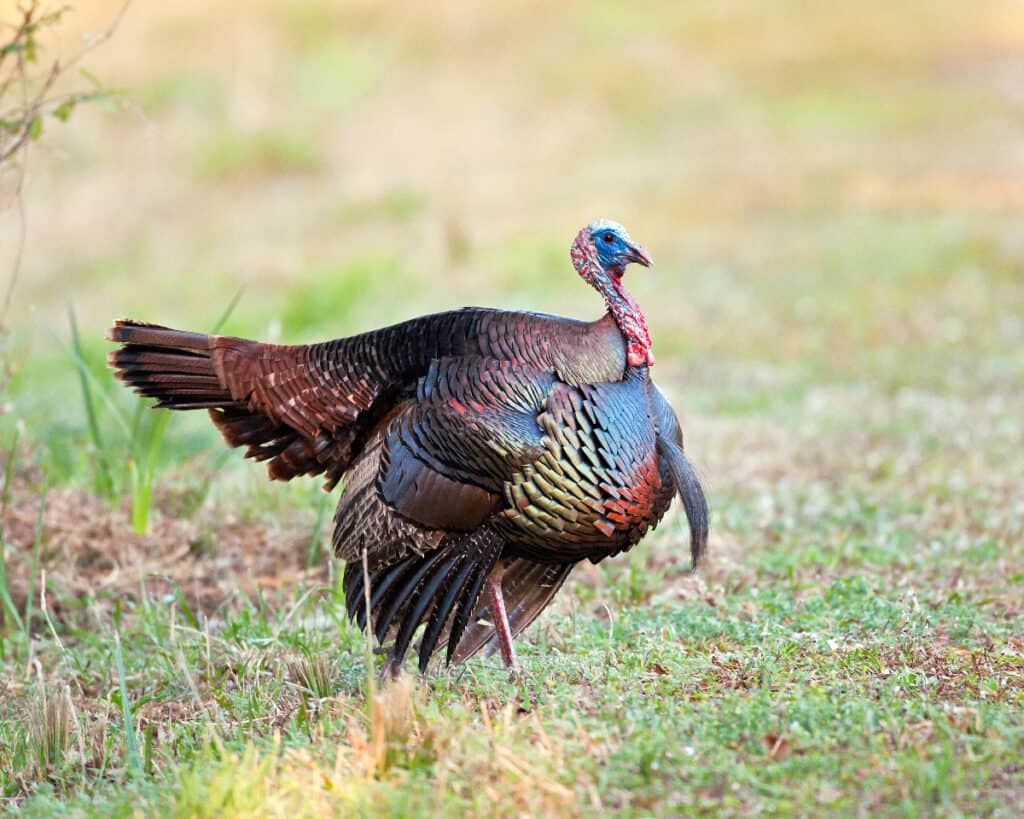
Osceola turkeys are a subspecies of turkeys that can only be found in Florida.
©Sandy Hedgepeth/Shutterstock.com
Osceola turkeys are native to Florida. These turkeys look similar to the Eastern wild turkey but have wings that appear a bit darker due to smaller white bands. They are also a bit smaller, typically weighing around 20 lbs. The Florida Fish and Wildlife Conservation Commission has a Wild Turkey Management Program that helps manage the turkey populations and monitor turkey hunting. They maintain a Wild Turkey Registry, but instead of keeping track of the largest turkeys, they keep track of the turkeys with the largest beards. To date, the record for the Osceola turkey with the longest beard was caught by Clinton Woods in 2011. The beard measured 15.5 inches. Cody May from Texas set a record with The National Wild Turkey Federation catching an Eastern turkey with the largest beard. It measured 22.2 inches long.
Rio Grande turkeys

Rio Grand species of turkey can be found in Texas, Oklahoma, Kansas, and parts of Mexico.
©Brent Coulter/Shutterstock.com
Speaking of Texas, the Rio Grand species of turkey can be found in Texas, Oklahoma, Kansas, and parts of Mexico. They look similar to the Eastern Turkeys except for the tan tips on their wings. The Rio Grande turkeys are the same size as the Osceola turkeys of Florida with the average male (male turkeys are called “Tom’s” or “Gobblers”) weighing about 20 lbs.
Merriam’s turkeys
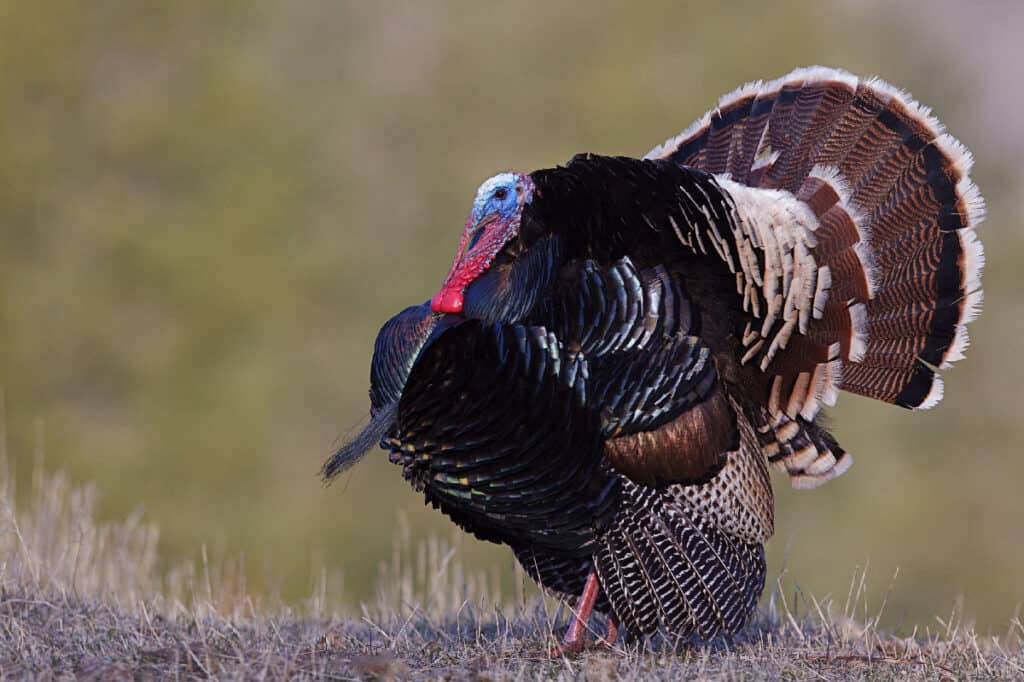
Merriam’s turkeys are found mostly in the Rocky Mountains but can be found in other western states as well.
©Tom Reichner/Shutterstock.com
Most Merriam’s turkeys live in the Rocky Mountains but in other western states as well. They are recognized by the white tips on their feathers. The Merriam’s turkeys will spend the summer at higher elevations in the ponderosa pine forests, but due to the deep snow, they come down to lower elevations during the winter. The male turkeys grow to be 18-30 lbs.
Eastern wild turkeys

Eastern wild turkeys live in 38 of 50 US states and in a few areas of Canada.
©Jim Cumming/Shutterstock.com
Eastern wild turkeys can be found in most states east of the Mississippi and many states to the west as well. In fact, they live in 38 of the 50 states as well as a few areas of Canada. They are by far the most common turkey. They are one of the largest turkeys (second largest overall) as well and have the longest beards of all the turkeys. Turkeys are social birds and like to congregate in small groups. Although they don’t fly long distances they can fly and will often roost at night in trees. The Eastern wild turkey can be anywhere from 15-30 lbs, but most are in the 15-25 lb range.
Gould’s wild turkeys
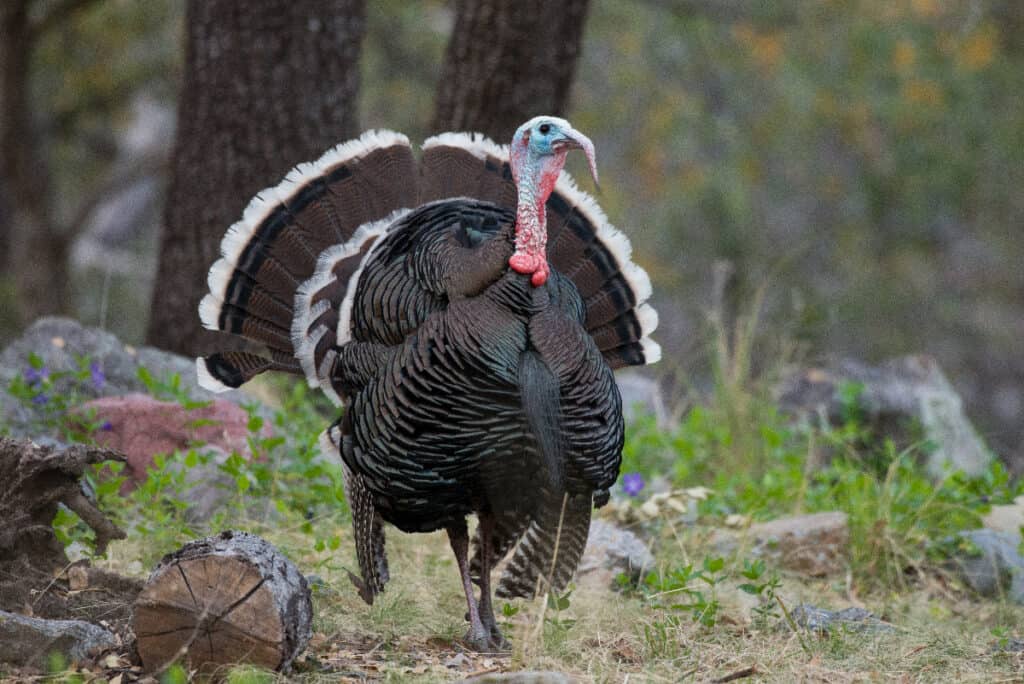
Gould’s wild turkeys are the largest of the turkey subspecies.
©Sean R. Stubben/Shutterstock.com
Gould’s wild turkeys are the largest of the turkey subspecies. This group of turkeys is one of the rarest turkey groups due to habitat loss and overhunting. At one point in the late 1990s conservationists teamed up to capture 35 wild Gould’s turkeys from Mexico and release them in Arizona to try to repopulate that area. It was a great success with more than 1,200 turkeys being counted in 2014. Today there are around 1,000 Gould’s turkeys in Arizona and limited hunting to maintain their numbers. There are also small populations living in Northern Mexico and New Mexico. They look quite similar to Merriam’s turkeys with white-tipped feathers and a white bottom, but their white seems to pop even more against their dark bodies. Gould’s turkeys can grow to be 18-30 lbs but tend to average towards the 30 lb mark.
Up Next
Thank you for reading! Have some feedback for us? Contact the AZ Animals editorial team.








